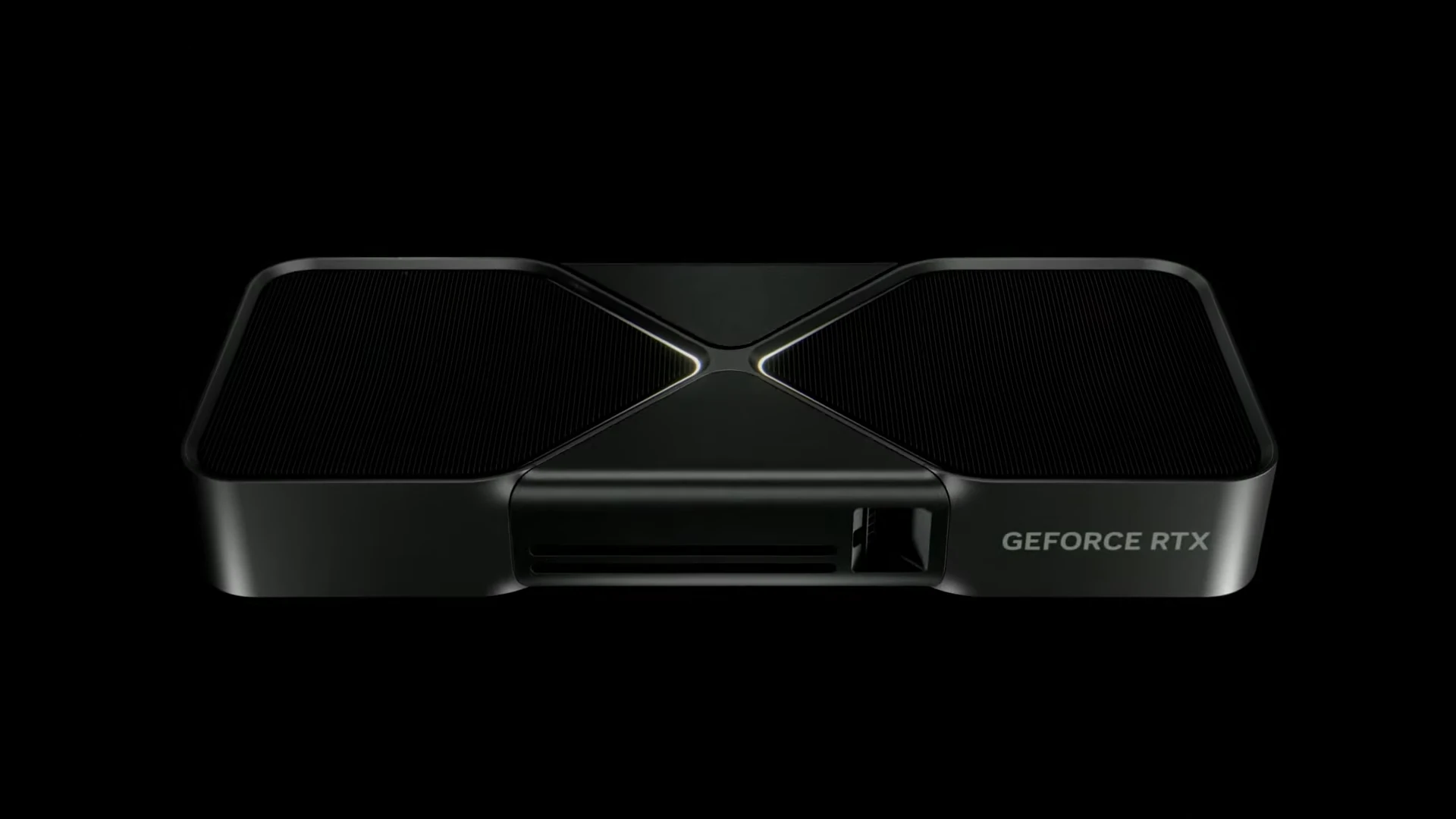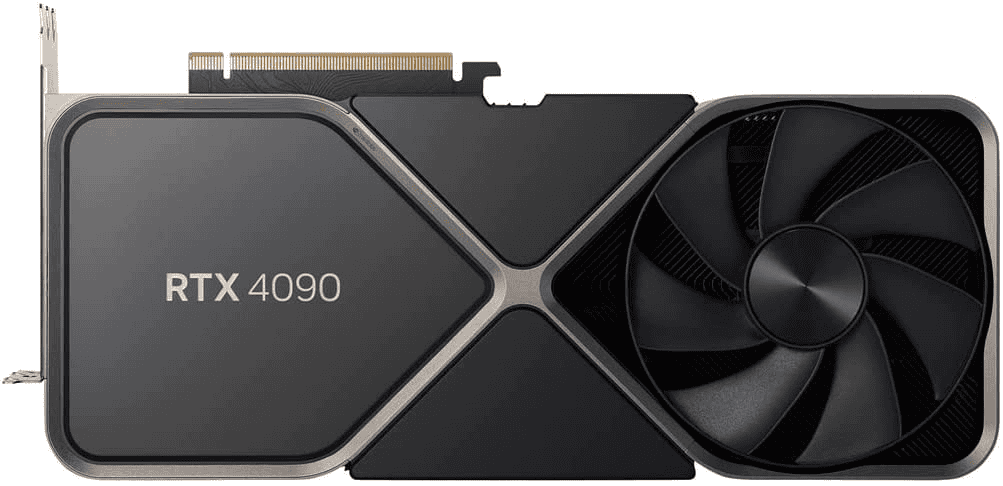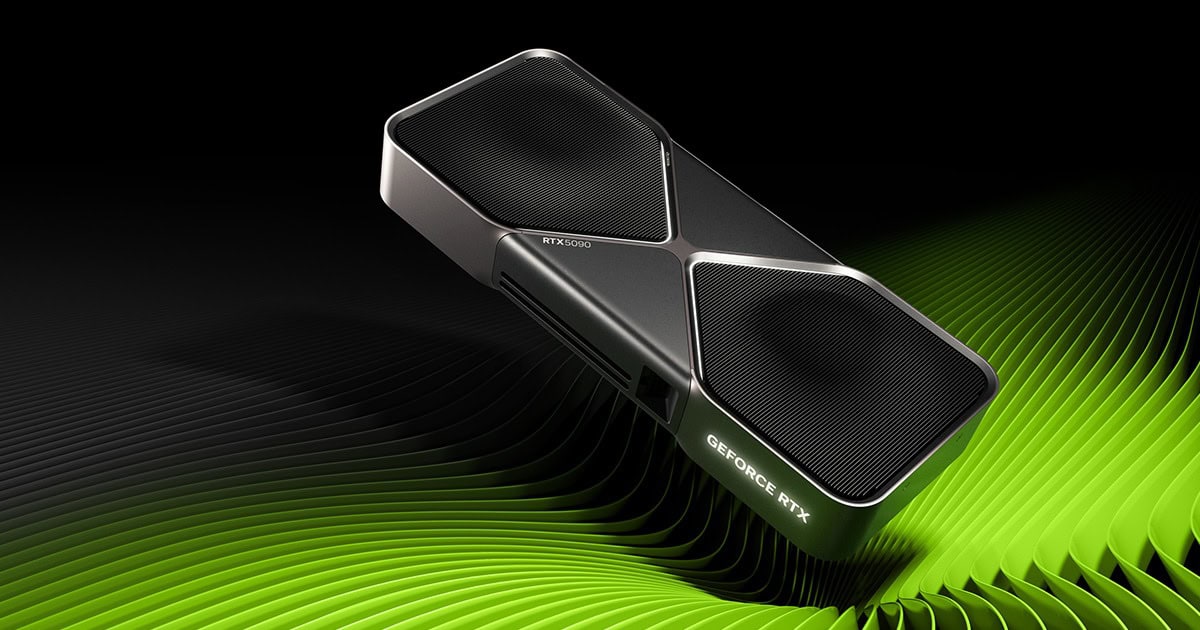NVIDIA’s latest graphics card, the GeForce RTX 5090, promises a significant performance boost. The company claims this new GPU is twice as fast as its predecessor, the RTX 4090. NVIDIA demonstrated the RTX 5090 running Cyberpunk 2077 with full ray tracing at 238 fps, compared to 106 fps on the RTX 4090.
The RTX 5090 boasts impressive specifications. It features 32GB of GDDR7 memory, 1792 GB/sec of total memory bandwidth, and 21,760 CUDA Cores. These upgrades contribute to its enhanced performance and capabilities for gamers and creators alike.

Priced at $2,000, the RTX 5090 represents the pinnacle of NVIDIA’s GPU technology. The company also introduced other models in the RTX 50 series, including the RTX 5080, 5070 Ti, and 5070, all claiming to be twice as fast as their previous generation counterparts.
Jensen Huang’s Bold Claim: RTX 5090 Doubles the 4090’s Speed

A Generational Leap in Performance
At CES 2025, NVIDIA CEO Jensen Huang made a striking statement: the GeForce RTX 5090 is twice as fast as its predecessor, the RTX 4090. This claim has sent ripples of excitement through the gaming community, as it suggests a massive leap in graphical processing power. While independent benchmarks are needed to confirm this assertion, the potential for such a performance boost is undeniably captivating.
Factors Contributing to the Speed Increase
Several key advancements likely contribute to this purported performance jump. The RTX 5090 is built on the new Blackwell architecture, designed with AI capabilities at its core. This architecture is optimized for the demands of modern gaming and AI-powered features like DLSS.
Additionally, the 5090 boasts a significant increase in CUDA core count, exceeding 21,000 compared to the 4090’s 16,384. This allows for more parallel processing power, crucial for handling complex game scenes and rendering high-resolution graphics.
The 5090 also utilizes GDDR7 memory, a substantial upgrade from the 4090’s GDDR6X. This faster memory allows for quicker data transfer between the GPU and memory, reducing potential bottlenecks and improving overall performance.
DLSS 4: Amplifying Performance Through AI
Another contributing factor is DLSS 4, the latest iteration of NVIDIA’s Deep Learning Super Sampling technology. DLSS leverages AI to upscale game resolution, effectively rendering fewer pixels while maintaining image quality. This results in a significant performance boost, allowing for higher frame rates and smoother gameplay.
Huang specifically highlighted that the 5090’s performance gains are most pronounced in games that utilize ray tracing and DLSS. This suggests that the combination of Blackwell’s architecture, increased CUDA cores, faster memory, and DLSS 4 creates a synergistic effect, pushing gaming performance to new heights.
Awaiting Independent Verification
While Huang’s claims are certainly exciting, it’s important to remember that they are just that – claims. Independent benchmarks and reviews will provide a more objective assessment of the 5090’s true capabilities.
However, if the 5090 lives up to even a portion of the hype, it could mark a significant milestone in PC gaming, ushering in an era of unprecedented graphical fidelity and performance.
The Future of Gaming with AI
The advancements in the RTX 5090, particularly its focus on AI-powered features like DLSS, point towards a future where AI plays an increasingly crucial role in gaming.
AI can be used to enhance graphics, improve performance, and even create more immersive and realistic gaming experiences. Imagine games where AI generates dynamic environments, creates intelligent NPCs with unique behaviors, and tailors gameplay experiences to individual players.
The RTX 5090’s capabilities suggest that we are on the cusp of a new era in gaming, where AI and graphics processing converge to create truly groundbreaking experiences.
Key Takeaways
- The NVIDIA GeForce RTX 5090 claims to deliver twice the performance of the RTX 4090
- NVIDIA demonstrated the RTX 5090’s capabilities with Cyberpunk 2077, showcasing improved frame rates
- The new GPU features 32GB of GDDR7 memory and is priced at $2,000
Evaluating the Performance Leap
NVIDIA has recently announced the GeForce RTX 5090, creating a buzz in the gaming community. This new graphics card claims to double the performance of its predecessor, the RTX 4090. The 5090 features important advancements, such as the new Blackwell architecture, a significant increase in CUDA cores, and the use of GDDR7 memory.
With the latest DLSS 4 technology, the 5090 aims to provide a big boost in both gaming performance and visual quality. While we still need independent benchmarks, it is clear that the RTX 5090 has the potential to change the future of PC gaming.
NVIDIA’s claims of a significant performance increase for the RTX 5090 over its predecessor have sparked interest in the gaming and tech communities. The potential advancements in GPU technology and their implications for high-resolution gaming are particularly noteworthy.
Benchmarking the RTX 5090 Against RTX 4090
Early benchmarks suggest the RTX 5090 outperforms the RTX 4090 by a substantial margin. Some reports indicate a 60-70% performance boost over its predecessor. This aligns with NVIDIA’s assertion of a 2X speed increase.
Specific improvements are seen in video encoding and decoding capabilities. The RTX 5090 can export video 60% faster than the RTX 4090, with support for 4:2:2 pro-grade color format and multiview-HEVC.
Gaming performance at 4K and 8K resolutions shows marked improvements. Frame rates in demanding titles have increased significantly, allowing for smoother gameplay at higher settings.
Advancements in GPU Technology
The RTX 5090’s performance gains stem from several technological advancements. NVIDIA’s new Blackwell architecture replaces the previous Ada Lovelace design, bringing substantial improvements.
Key enhancements include:
- Increased CUDA core count
- More efficient ray tracing cores
- Enhanced tensor cores for AI-driven tasks
- GDDR7 memory implementation
- Possible multi-chiplet design
These upgrades contribute to better ray tracing performance and more efficient DLSS 4 implementation. The GPU’s ability to handle complex rendering tasks has improved dramatically.
Implications for High-Resolution Gaming
The RTX 5090’s performance leap has significant implications for high-resolution gaming. 4K gaming at high refresh rates becomes more accessible, while 8K gaming sees notable improvements.
Ray tracing performance enhancements allow for more realistic lighting and reflections in games. This leads to improved visual fidelity without sacrificing frame rates.
DLSS 4 technology, coupled with the increased GPU power, enables better upscaling. This allows gamers to enjoy higher resolutions with minimal performance impact.
The RTX 5090’s capabilities push the boundaries of PC gaming graphics. It opens new possibilities for game developers to create more visually stunning and immersive experiences.
Frequently Asked Questions
The GeForce RTX 5090 promises significant performance gains and new features compared to its predecessor. Users have many questions about its capabilities, release date, and pricing.
What are the performance benchmarks for the GeForce RTX 5090 compared to the RTX 4090?
NVIDIA CEO Jensen Huang claims the RTX 5090 is twice as fast as the RTX 4090. This statement suggests a substantial performance leap. Actual benchmarks will be needed to verify this claim across various games and applications.
What is the release date for the NVIDIA GeForce RTX 5090?
NVIDIA unveiled the RTX 5090 at CES 2025. The exact release date remains unconfirmed. High-end cards typically launch first, so the RTX 5090 may be available in stores within a few months of its announcement.
How does the GeForce RTX 5090’s power consumption compare to that of the RTX 4090?
NVIDIA has not yet released official power consumption figures for the RTX 5090. Given the performance increase, it may require more power than the RTX 4090. Efficiency improvements could help offset higher power needs.
What new features does the GeForce RTX 5090 offer over the RTX 4090?
The RTX 5090 comes with DLSS 4, an upgraded version of NVIDIA’s AI-powered upscaling technology. This feature aims to boost performance and image quality in supported games. Other potential improvements may include enhanced ray tracing capabilities and faster memory.
What is the anticipated price range for the NVIDIA GeForce RTX 5090?
Industry insiders suggest the RTX 5090 may cost between $2,000 and $2,500. This price range positions it as a premium product for enthusiasts and professionals. Final pricing will be confirmed closer to the launch date.
How does the ray tracing capability of the RTX 5090 compare to the RTX 4090?
While specific details are not yet available, the RTX 5090 is expected to offer improved ray tracing performance. This enhancement may result in more realistic lighting, shadows, and reflections in games and 3D applications.







